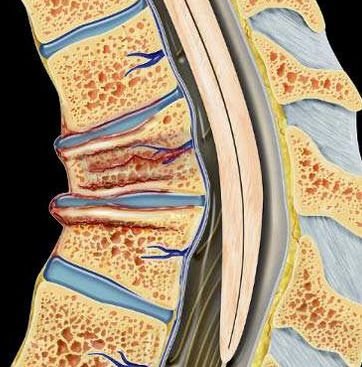Odontoid fractures
Odontoid fractures
An odontoid fracture, also known as a dens fracture, is a break in the peg-like projection (odontoid process or dens) that arises from the second cervical vertebra (C2). This part of the spine plays a critical role in neck rotation and overall cervical spine stability. Odontoid fractures are among the most serious upper cervical injuries, especially in trauma-prone regions like Bangladesh, where motorbike accidents, falls, and roadside trauma are common. Without proper diagnosis and treatment, these injuries can lead to severe spinal cord damage, paralysis, or even sudden death. Timely, specialized care is essential — and Dr. Md. Nafaur Rahman is one of Bangladesh’s foremost experts in managing complex craniocervical junction injuries, including odontoid fractures. Rising Incidence in Bangladesh: A Growing Concern In Bangladesh, increasing road traffic accidents, especially involving motorcyclists, rickshaw passengers, and pillion riders, are leading to a noticeable rise in upper cervical spine injuries. Many patients arrive at emergency departments with neck pain or neurological symptoms but are not accurately diagnosed due to the lack of specialized spinal trauma protocols. Moreover, rural falls, sports trauma, and elderly osteoporosis-related injuries contribute significantly to odontoid fracture cases. Unfortunately, the lack of CT and MRI access in district-level hospitals leads to delayed or missed diagnoses, increasing long-term complications. Common Causes of Odontoid Fractures in Bangladesh Motorbike or rickshaw accidents Falls from rooftops, trees, or unprotected stairways Head-first diving into shallow water Sports injuries involving neck impact Assault or physical abuse (in non-accidental trauma) Elderly trauma with osteoporosis Symptoms of Odontoid Fracture Severe neck pain and limited movement Neurological weakness or numbness in limbs Tingling or paralysis, especially in unstable fractures Difficulty holding head upright or neck instability Loss of consciousness or confusion in high-impact trauma Breathing difficulty if spinal cord involvement occurs In children: crying with movement, abnormal posture, irritability Types of Odontoid Fractures (Anderson and D’Alonzo Classification) Type I – Oblique fracture of the tip of the dens (rare, usually stable) Type II – Fracture at the base of the dens; most common and often unstable Type III – Fracture extending into the body of C2; more stable than Type II Type II fractures are the most dangerous and frequently require surgical fixation, especially when displacement is observed. Diagnostic Protocol in Bangladesh Dr. Md. Nafaur Rahman follows an international standard diagnostic approach customized for the Bangladeshi healthcare setting: Cervical CT scan – Essential for identifying fracture type and displacement MRI – Evaluates spinal cord compression and ligamentous injury 3D Reconstruction Imaging – For pre-operative planning Dynamic X-rays – Performed only in stable cases under guidance In many upazila or district-level hospitals, these injuries are not detected early. Timely referral to a neurosurgical expert like Dr. Nafaur is life-saving. Management Approaches ✅ Non-Surgical Treatment Reserved for Type I or minimally displaced Type III fractures: Rigid cervical collar or halo vest immobilization for 8–12 weeks Close radiological monitoring to confirm healing Pain relief and anti-inflammatory support Physical therapy after stabilization This option is especially useful in children and elderly patients, provided there’s no displacement or instability. ✅ Surgical Treatment Indicated in: Displaced Type II fractures Fractures with instability or ligament disruption Non-union after conservative management Neurological deficits present Surgical Techniques Used: Anterior Odontoid Screw Fixation – Preserves motion at C1-C2 Posterior C1-C2 Fusion (Harms or Goel technique) – Preferred in unstable fractures Occipitocervical Fusion – For complex injuries or elderly patients Intraoperative Neuromonitoring – Ensures spinal cord safety during surgery Dr. Md. Nafaur Rahman is skilled in performing these procedures using modern spinal systems and ensures low blood loss and fast recovery. Pediatric Odontoid Fractures Children with odontoid fractures need special evaluation. Growth plates, bone elasticity, and healing potential are different from adults. Dr. Nafaur follows pediatric-specific protocols for minimally invasive stabilization and growth-friendly fusion options. Recovery and Prognosis Hospital stay: 5–7 days for surgical cases Immobilization: 6–12 weeks with collar or brace Neurological rehab: As needed based on spinal cord involvement Follow-up imaging: Essential for tracking healing With early intervention, most patients regain full function and avoid long-term complications. Why Choose Dr. Md. Nafaur Rahman for Odontoid Fracture Care? ✅ Highly experienced in upper cervical and C2 fractures ✅ Expert in both adult and pediatric spine injuries ✅ Operates at Bangladesh’s premier neurosurgical institute (NINS) ✅ Personalized care and surgical precision at Bangladesh Paediatric Neurocare Centre ✅ Strong reputation for high success rate in complex craniovertebral injuries Book Your Consultation Today 📌 Dr. Md. Nafaur Rahman Assistant Professor, Department of Pediatric Neurosurgery, NINS Chief Consultant, Bangladesh Paediatric Neurocare Centre 📱 For Serial/Appointment: 📞 +8801912988182 | +8801607033535 🌐 Visit: www.neurosurgeonnafaur.com










